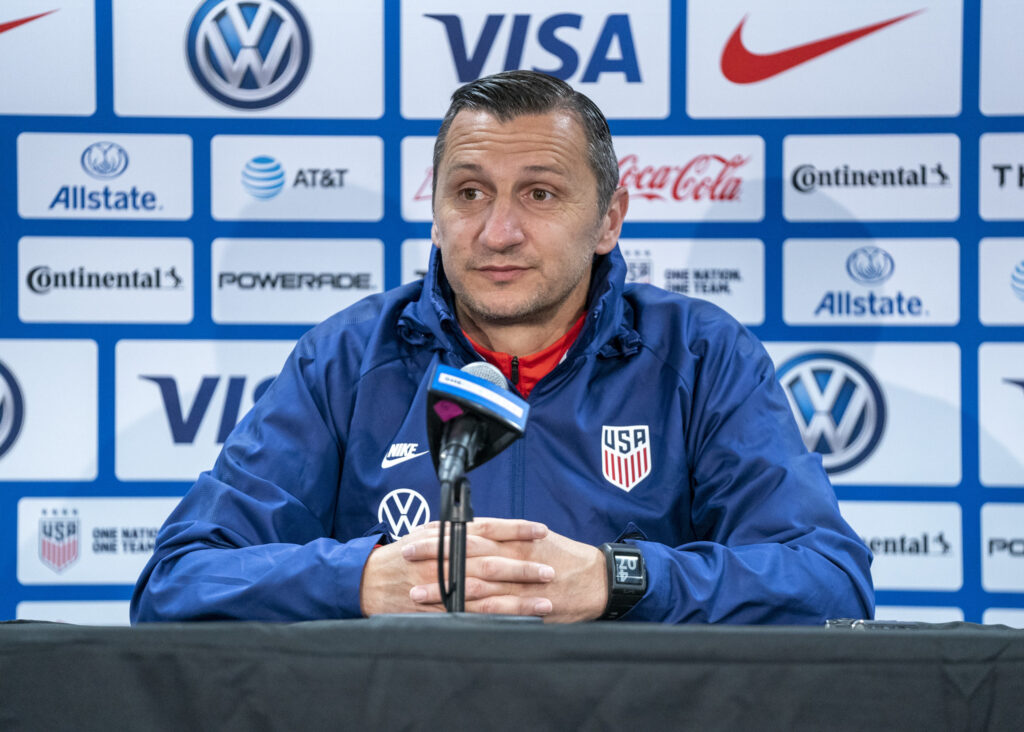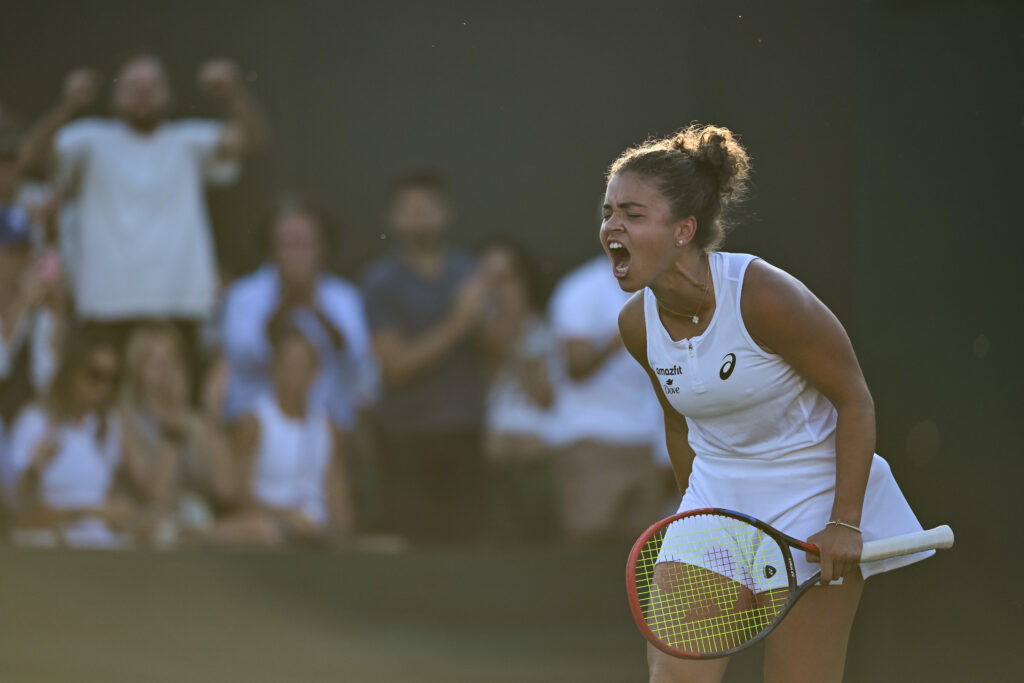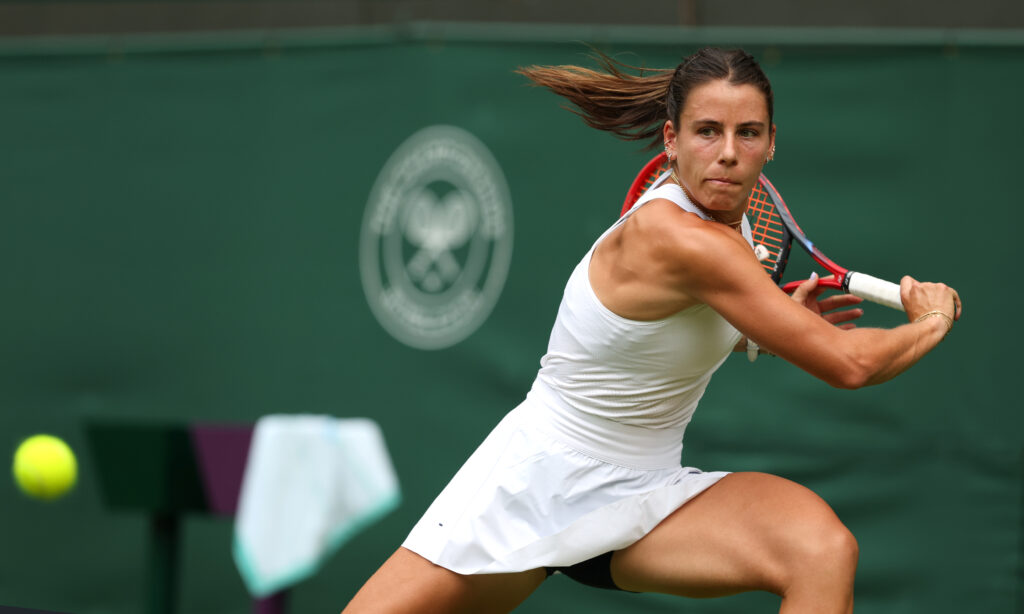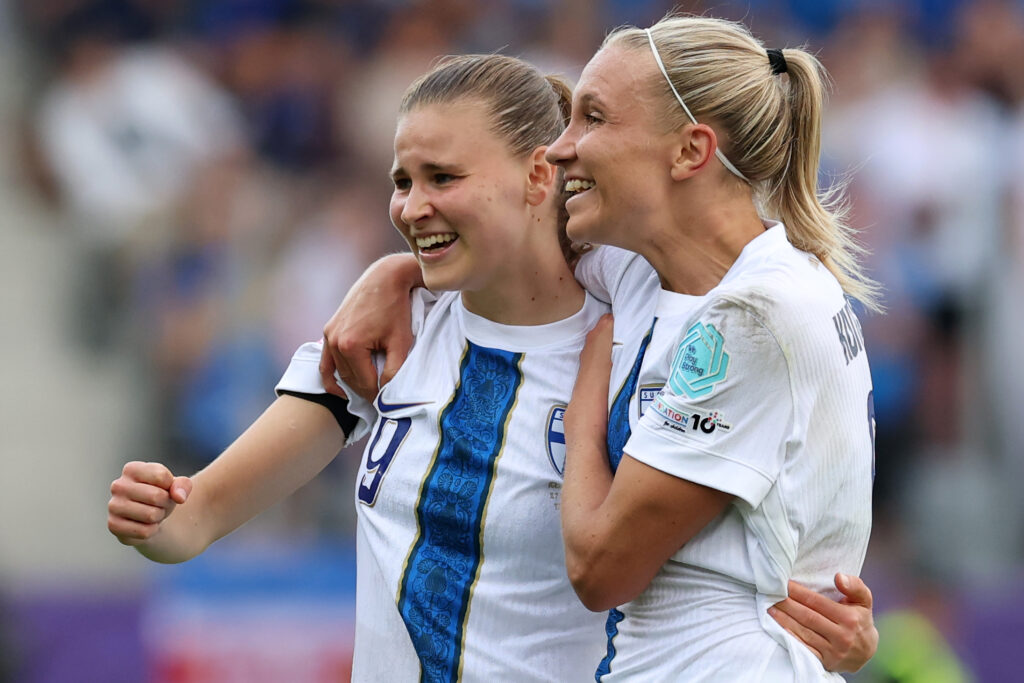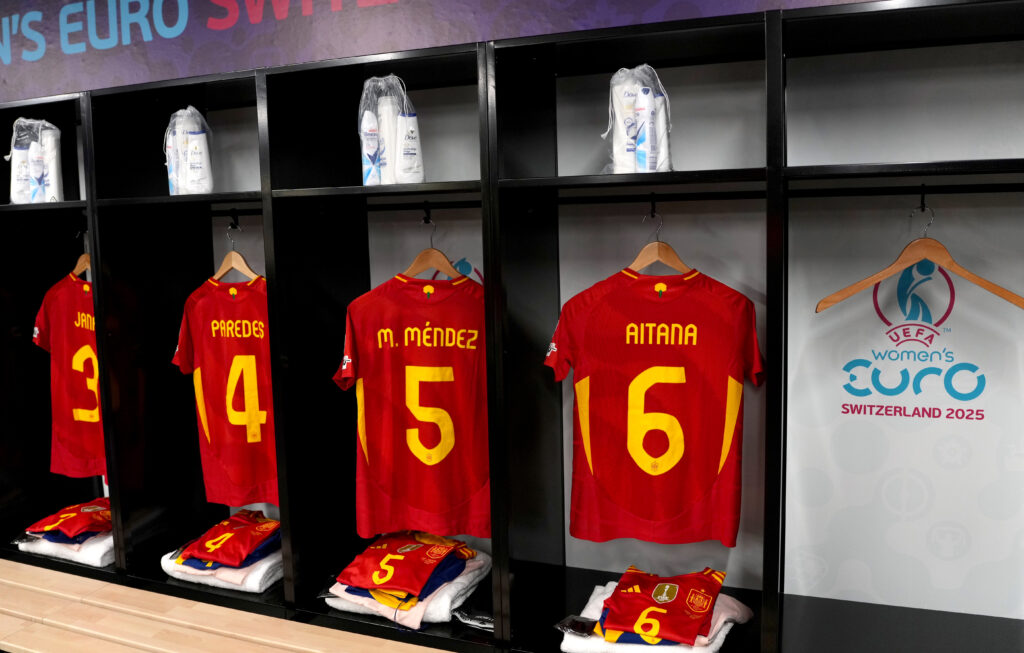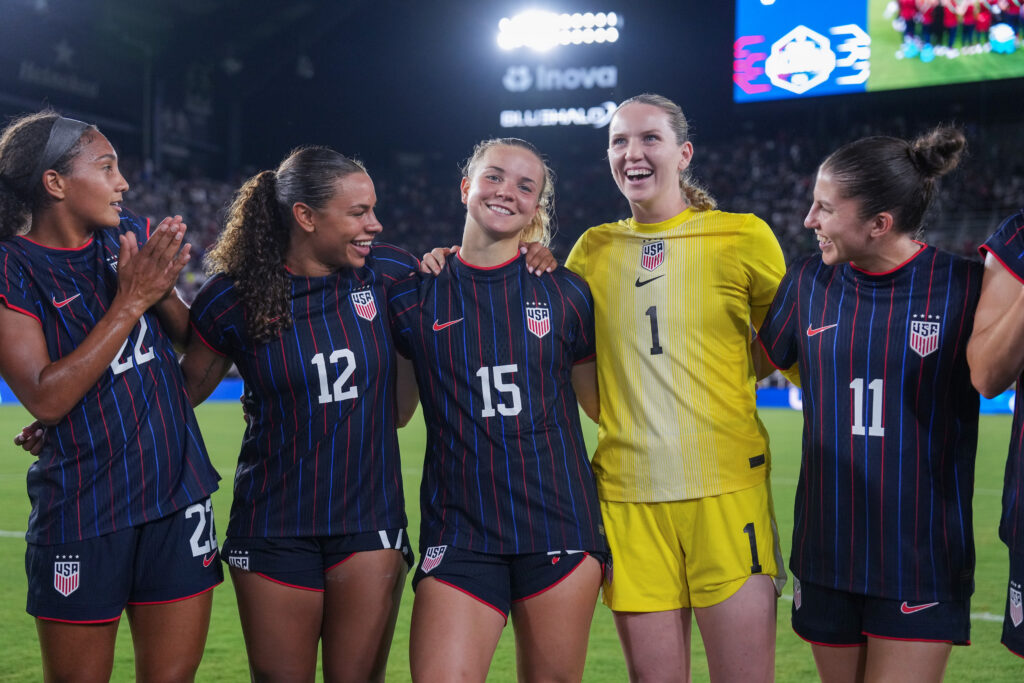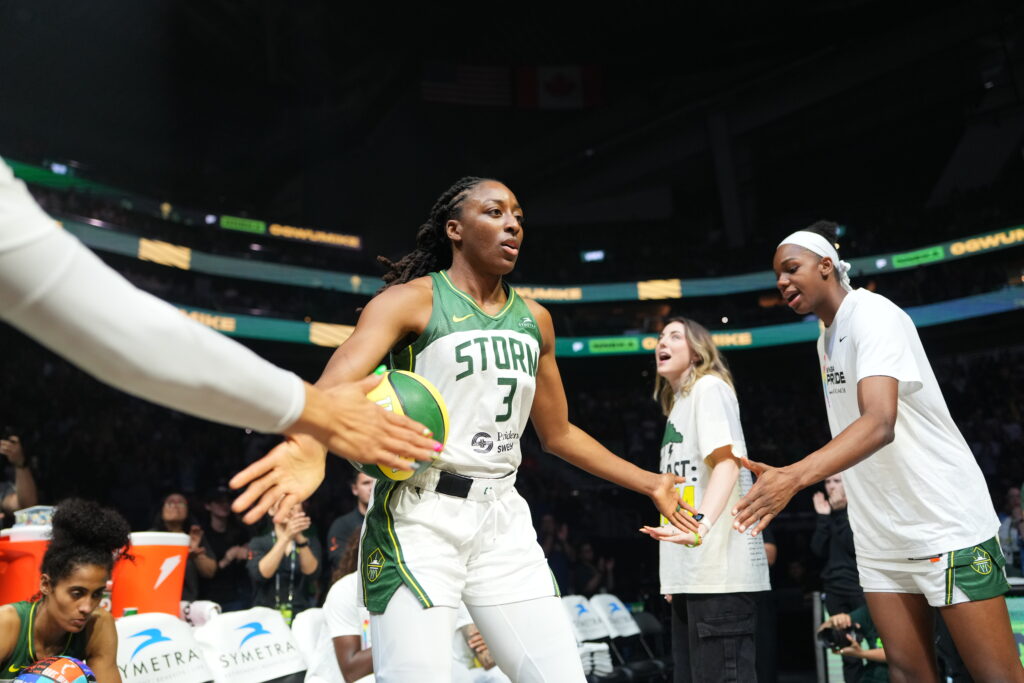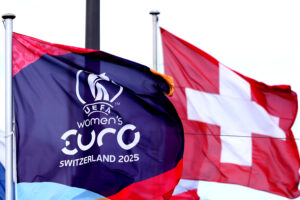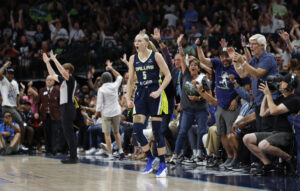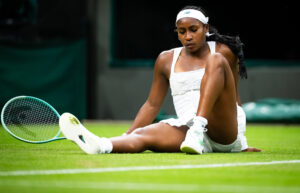The United States women’s national team will not be playing for gold after losing to Canada 1-0 in the Olympic semifinal on Monday. Canada eked past the USWNT on a VAR-reviewed penalty, defeating the U.S. for the first time in 20 years.
The national team’s lackluster semifinal performance against Canada was indicative of their play all tournament.
“I feel like we haven’t had our joy,” Megan Rapinoe said after the loss.
Attention now turns to coach Vlatko Andonovski, who came into the tournament unbeaten during his year and half as the USWNT head coach. A pre-tournament New York Times profile even referred to him as “The Coach Who Can’t Lose.” But in his first real test at the helm of the USWNT, Andonovski’s squad drastically underperformed, leaving the new coach exposed to some heavy (and legitimate) criticism.
Here are the three questions Andonovski will have to answer after the Tokyo Olympics.
1. Was the roster too old?
Andonovski’s decision-making first faced scrutiny after the final Tokyo roster was announced in June. The Olympic squad relied heavily on an aging veteran core, with 17 of the 18 players a part of the 2019 World Cup-winning team. The average age of the team was 30 years old. Detractors immediately questioned Andonovski’s commitment to experience and his reluctance to include new talent, especially in a tournament as physically grueling as the Olympics.
Lynn Williams, who was initially named to the Tokyo roster as an alternate, only joined the full team after the International Olympic Committee approved the expansion of soccer rosters to 22 players. The North Carolina Courage striker proved to be one of the only bright spots in the USWNT’s attack, notching a goal and an assist in the quarterfinal against the Netherlands. Had the Olympic organizers not granted roster expansion, Williams wouldn’t have even taken the field in Tokyo.
Williams started her second game in a row against Canada, an implicit admission of error in Andonovski’s initial scouting.
GOAL, #USWNT! What a turn of events in Tokyo! Lynn Williams gives the US the lead after getting the assist on the equalizing goal a bit earlier! #TokyoOlympics | 🇳🇱 1-2 🇺🇸pic.twitter.com/UJ59y29pP9
— The Equalizer (@EqualizerSoccer) July 30, 2021
2. Why was the USWNT’s subbing such a mess?
Andonovski’s rotation of players also drew consistent criticism throughout the tournament. The coach sometimes opted for wholesale line changes, swapping out the front three of Alex Morgan, Tobin Heath and Lynn Williams for Carli Lloyd, Christen Press and Megan Rapinoe in the 60th minute of Monday’s semifinal, even as Williams was starting to create chances. The hockey-like line changes up top also left a struggling midfield sub-less until the 80th minute, when Sam Mewis finally checked into the game against Canada.
Andonovski’s rotation cycles added to questions of chemistry, attacking consistency and continuity, as the USWNT never seemed to find its rhythm.
Many observers, us included, were clamoring for Press and Williams to play up top together. The two wingers are key to the USWNT’s high press and ability to stretch opponents’ backlines. But Williams and Press never took the pitch together, leaving an opportunity to overload Canada’s defense unexploited.
a concept: press and williams at the SAME time
— Meg Linehan (@itsmeglinehan) August 2, 2021
3. What happened to the offensive innovation?
With Andonovski’s hire came the promise of new and innovative offensive tactics. There was a lot of talk leading up to the Olympics about a sophisticated offensive approach, a deviation from the USWNT’s more direct style of play. That promise, however, never came to fruition. The United States was shut out of three games in their five Olympic contests, and the team’s attack never fully clicked.
Part of the issue stemmed from a disjointed midfield that failed to facilitate offensive chances. Against Canada, the USWNT’s first shot on goal didn’t come until the 65th minute.
NWSL Analitica pointed to another shortcoming: The USWNT relied too heavily on its flanks. Most of the team’s chances came from frantic crosses into the box that didn’t connect with any runners.
Some crosses pic.twitter.com/hjmT43qucK
— NWSL Analitica (@NwslAnalitica) August 2, 2021
Andonovski will surely have to address the breakdown of the team’s offense and the lack of strong build-up play through the midfield after the tournament.
Whether or not Andonovski remains in the hot seat may be determined by the team’s performance in the upcoming bronze-medal match. A loss could add to the mounting pressure on the USWNT coach, while a win may buy him some time.
The USWNT will face Australia on Thursday for a spot on the Olympic podium.
